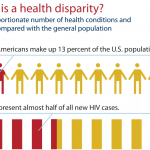By 2025 we’re expected to have a billion new internet users. Many of these NBUs (Next Billion Users) will have low literacy. What will this mean for UX writers and content strategists? How can we best communicate with NBUs with low literacy?
Why will NBUs have low literacy?
The last billion users of the internet were a mix of adults in developed countries, and children. They learned to use the internet on desktops, laptops, iPads, and phones. Today their top challenges are things like poor internet access and scams.
But the majority of NBUs will struggle with all of that and more. They will be adults, teenagers, and children. Most BNUs will be from countries that didn’t previously have internet access. Their phones will be their only experience with technology, and many will have low literacy. To quote an article from Quartz:
And unlike the first billion users who, for the most part, were middle-class and lived in wealthy countries, these next billion users are substantively low-income and live in poorer countries.
Tech Companies Misunderstand the Next Billion Users, Quartz
How does low literacy affect internet usage
There are two main ways in which low literacy is likely to impact NBUs.
- When someone can’t read well, they rely on imagery
- When someone is stressed, they are less likely to experiment
Put another way, if someone can’t read then there’s a lot they don’t know. And when they’re new users, they’re not going to be familiar with icons that many of us take for granted. Consider these four groups:
| Digital natives don’t know what they know. They’ve been using the internet for so long that it comes naturally. | Tech workers tend to what they know. They practice their skills and know where to find more information. |
| NBUs know what they don’t know. They know there is knowledge out there that they’re missing, and thus they fear making an error. | Many young children don’t know what they don’t know. Because they don’t know that they could break something, they have no fear. |
Is it any wonder that NBUs with low literacy would be wary of using new apps, particularly when they don’t recognize the icons and can’t read detailed instructions?
Anxiety around new apps
In the tech world we often hear about older users who are afraid to try things out in new apps or websites. With that in mind, I asked my mom and my aunt recently why they don’t just press the buttons in a new app to see what they do. Their answer surprised me. They reminded me of the early 90s, when they each had access to a single computer. They would spend hours building something on the computer – but if they pressed a single wrong button, the whole thing would disappear! No auto-save, no cloud.
In other words, my mom – and many in her generation – are not afraid because of what they don’t know. They’re afraid because of what they do know. They remember the days when a new computer program could ruin your day.
Now imagine our NBUs. They don’t have that history, but much like my mom they only have a single device. It’s their only method of contact, and if they press the wrong button they could lose everything. With poor wifi they NBUs can’t rely on the cloud to auto-save their work. Without access to good IT, a broken phone could mean a week without being able to make sales.
We look at digital natives and think that our apps and devices are easy to use. But we forget that digital natives started off with phones and devices at a time when they might press any button. Digital natives learned that app buttons wouldn’t delete anything at the same time that they learned stove buttons could burn them. Our apps were not intuitive, these users simple had no concept of danger.
How to write for NBUs with low literacy
In short, some of our work around NBUs will be very similar to how we approach health literacy and plain language. Much like in healthcare, writing for NBUs requires an understanding of the end-user’s emotional and physical context. And plain language is always appropriate. But there is more that we can do:
- Look at your icons. How many require prior knowledge of devices and tools that no longer exist? It’s time to update the “save” icon and move away from a floppy disk that NBUs have never seen.
- Keep instructions simple. Low readability, and lots of images will help people understand what you’re telling them.
- Use progressive disclosure. Share information in context, and don’t overload your audience with too much info too quickly.
- Illustrate, don’t decorate. Decorative images have a place, but when it comes to low readability focus on images that could replace text. Decorative images can be confusing if they don’t actually help the end-user.
It’s a whole new world out there. Let’s make it usable!


